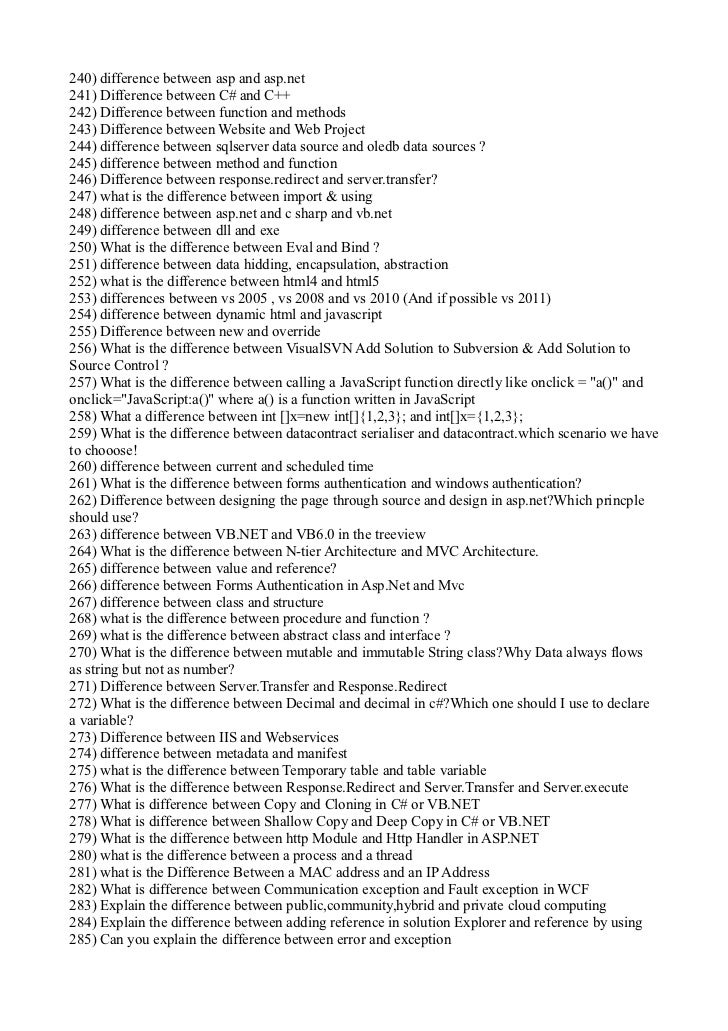
Two things: the extension and the header flag stored in the file. Both files are PE files.
Both contain the exact same layout. A DLL is a library and therefore can not be executed. If you try to run it you'll get an error about a missing entry point. An EXE is a program that can be executed.
May 19, 2011 2.An EXE file can be run independently while a DLL is used by other applications. 3.An EXE file defines an entry point while a DLL does not. 4.A DLL file can be reused by other applications while an EXE cannot. 5.A DLL would share the same process and memory space of the calling application while an EXE creates its.
It has an entry point. A flag inside the PE header indicates which file type it is (irrelevant of file extension).
The PE header has a field where the entry point for the program resides. In DLLs it isn't used (or at least not as an entry point). One minor difference is that in most cases DLLs have an export section where symbols are exported.
EXEs should never have an export section since they aren't libraries but nothing prevents that from happening. The Win32 loader doesn't care either way.
Other than that they are identical. So, in summary, EXEs are executable programs while DLLs are libraries loaded into a process and contain some sort of useful functionality like security, database access or something. Michael Taylor - 6/12/07. DLL - Dynamic Link Library An ActiveX Dll runs is an in process server running in the same memory space as the client process.
EXE – Executable File An ActiveX Exe is an out of process server which runs in its own separate memory space. Advantages of ActiveX Dll ------------------------- 1) An in-process component shares its client’s address space, so property and method calls don’t have to be marshaled. This results in much faster performance. Disadvantages of ActiveX Dll ---------------------------- 1) If an unhandled error occurs it will cause the client process to stop operating. Advantages of ActiveX Exe ------------------------- 1) The component can run as a standalone desktop application, like Microsoft Excel or Microsoft Word, in addition to providing objects. 2) The component can process requests on an independent thread of execution, notifying the client of task completion using events or asynchronous call-backs. This frees the client to respond to the user.
3)If an error occurs the client processes can continue to operate. Disadvantages of ActiveX Exe ---------------------------- 1) Generally slower than an ActiveX dll alternative. The DLL is an inprocess component but exe is outprocess component. When system launches an exe, a new process is created, for DLL a new process is not created. DLL is a WIN 32 LIBRARY file, whereas the exe is a WIN32 executable file. DLL can be reused and versioned.
DLL reduces storage space as different programs/files can use the same dll. DLL does not have a main function. DLL binding occurs at runtime. That is why its called 'Dynamic Link' library.
EXE has a single main entry point. Pls see Jeffrey Richter's 'Programming with.NET Framework' for more details. Both.dll and.exe are binary files DLL: Dynamic Link Library, its a library of functions. DLL files do not have an entry point-start up function(main function from where program execution starts). It is loaded dynamically with in a process execution hence it is a in process component. DLLs are faster in performance as compared to EXEs.
Download Software Rockers Hi Fi Mish Mash Rar. Elaboracion Casera De Carnes Y Embutidos Pdf. If exceptions are not handeled with in functions of DLL then it will cause process to terminate. EXE: Executable files, it is also a library of functions but they do have an entry point from where the program execution starts. It is an out of process component. Slower in performance as compared to DLLs.